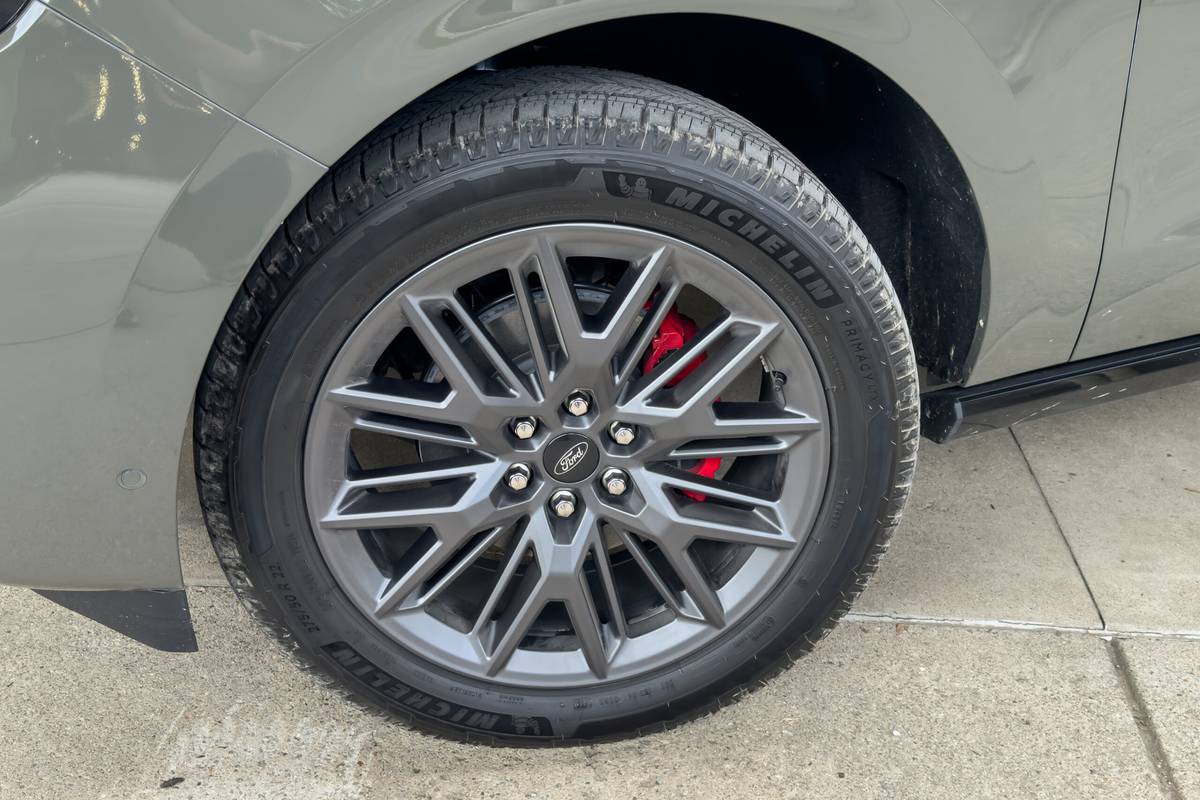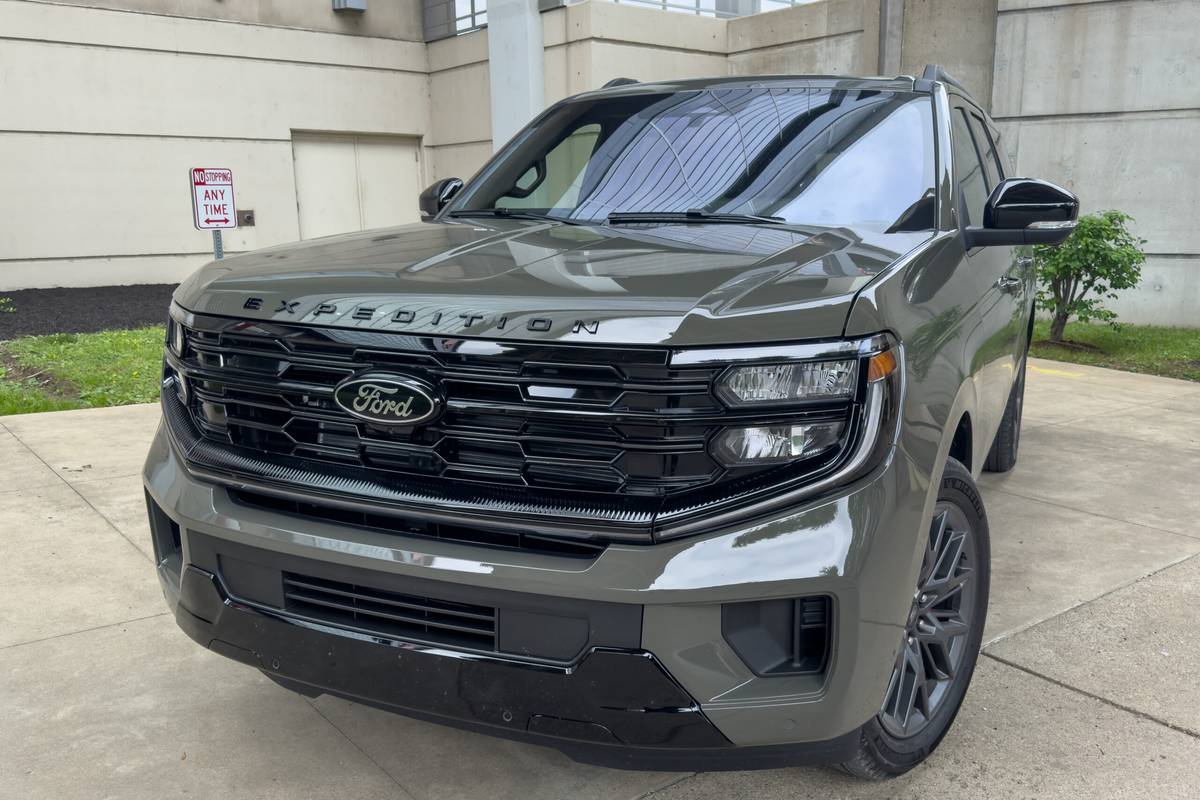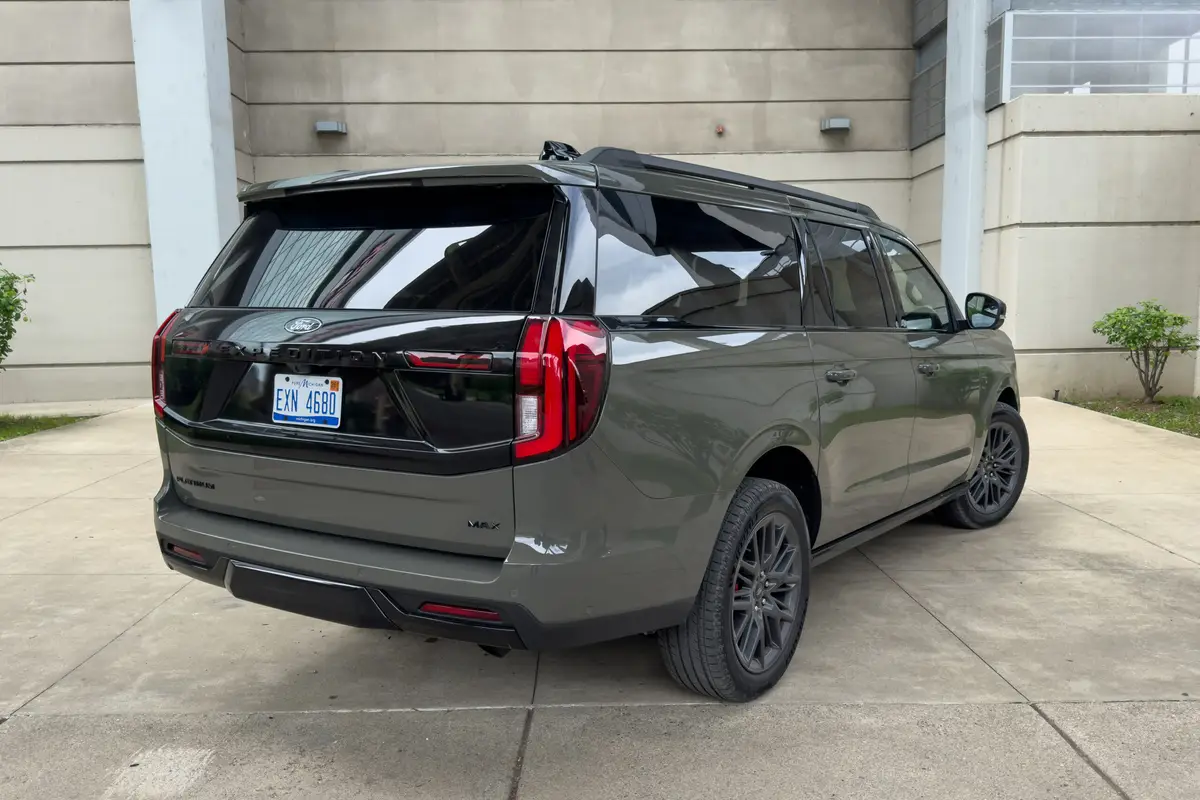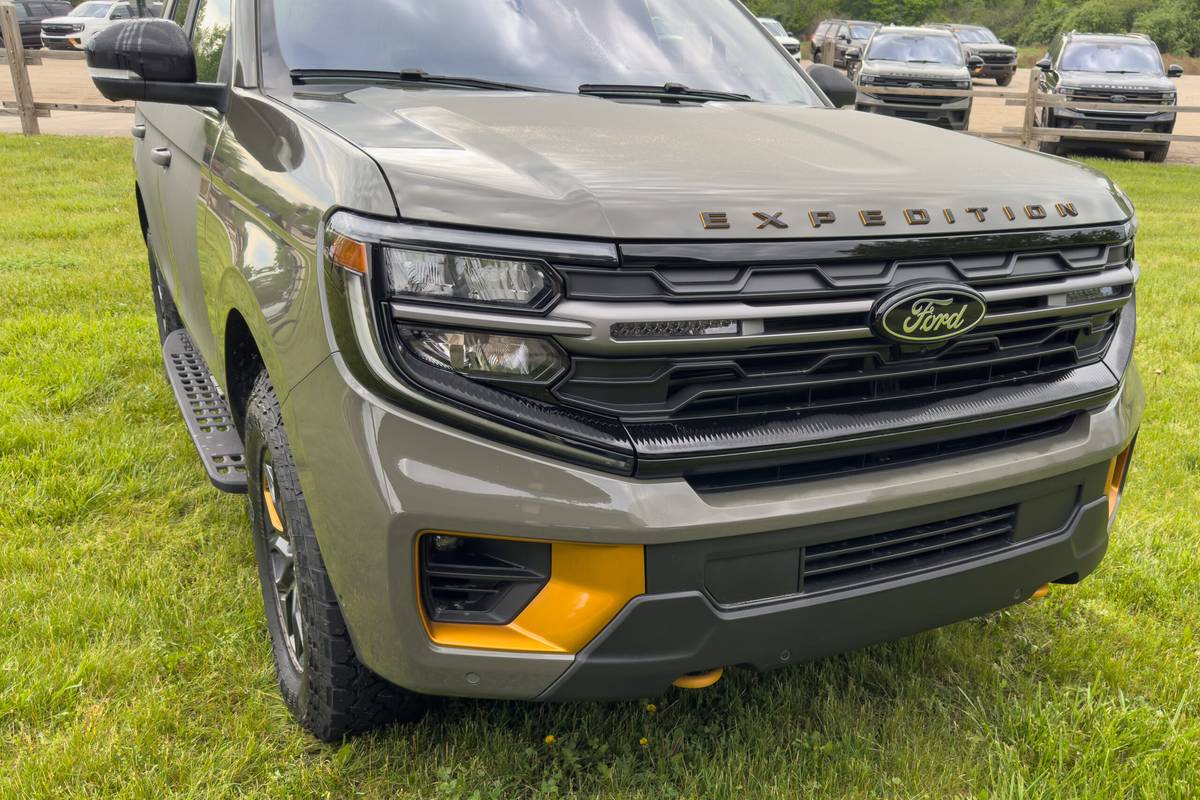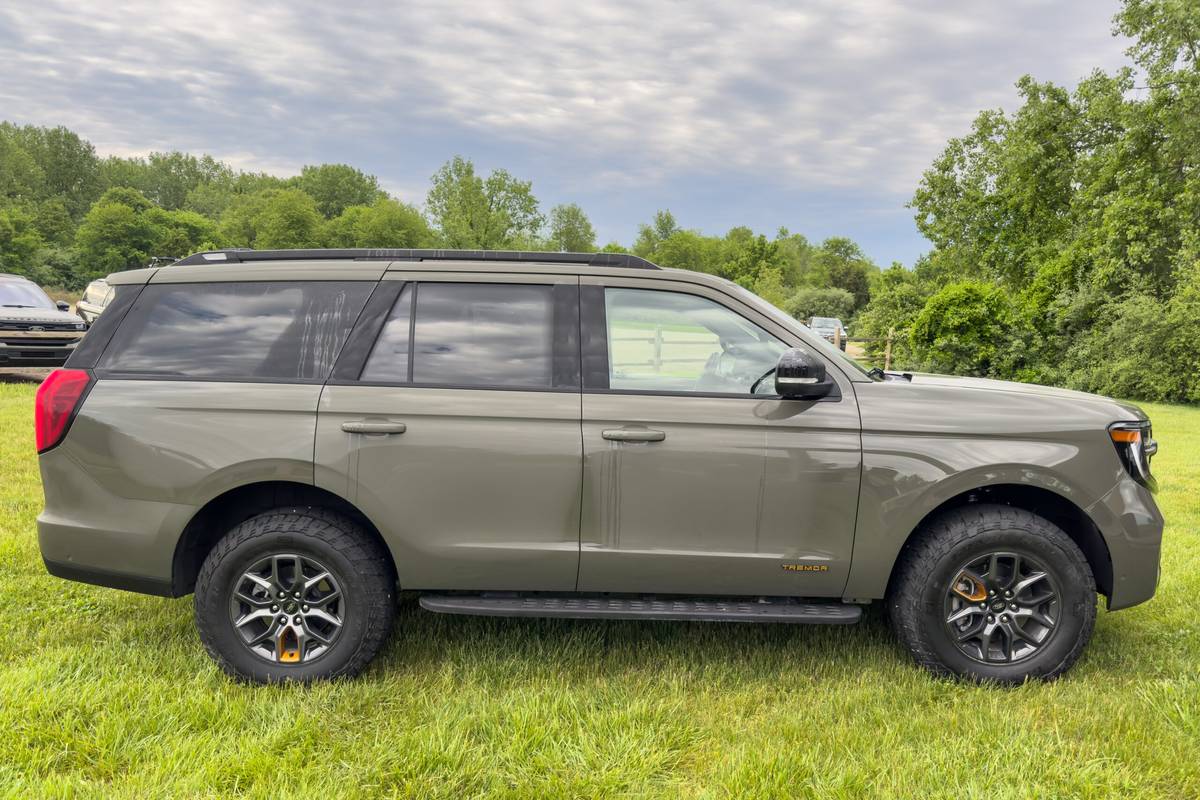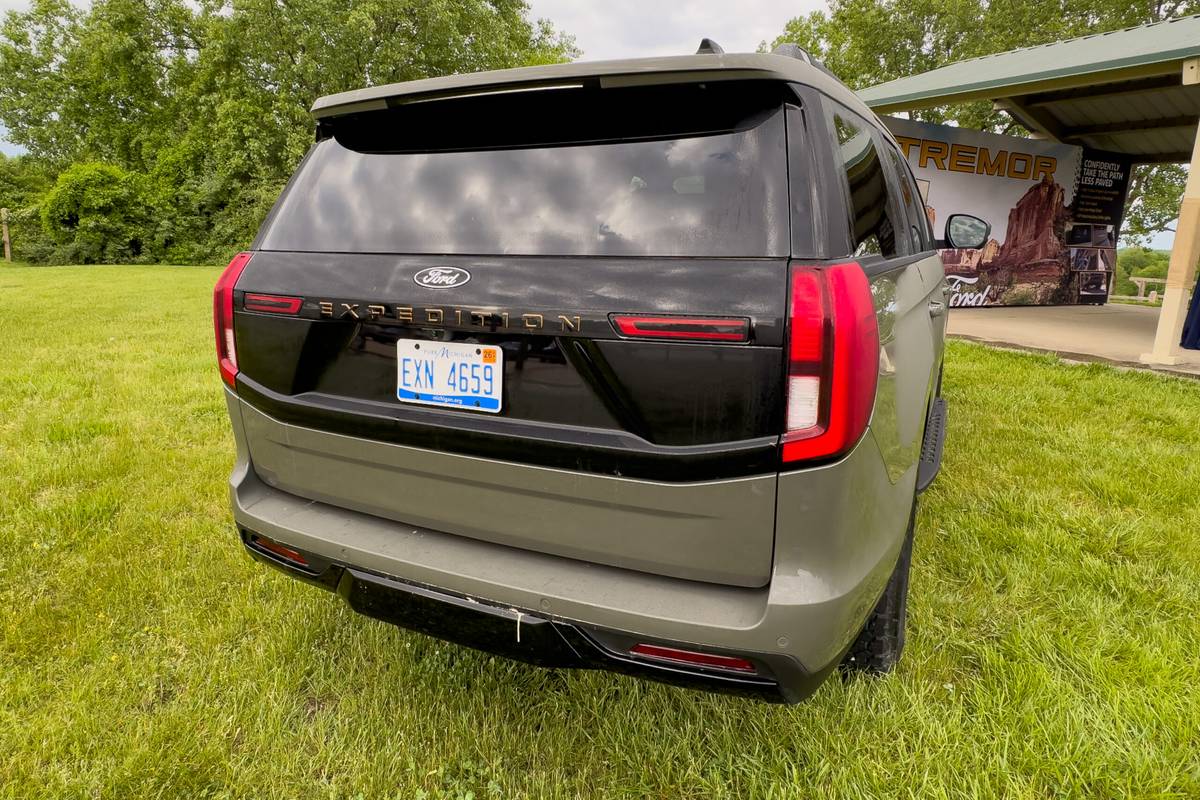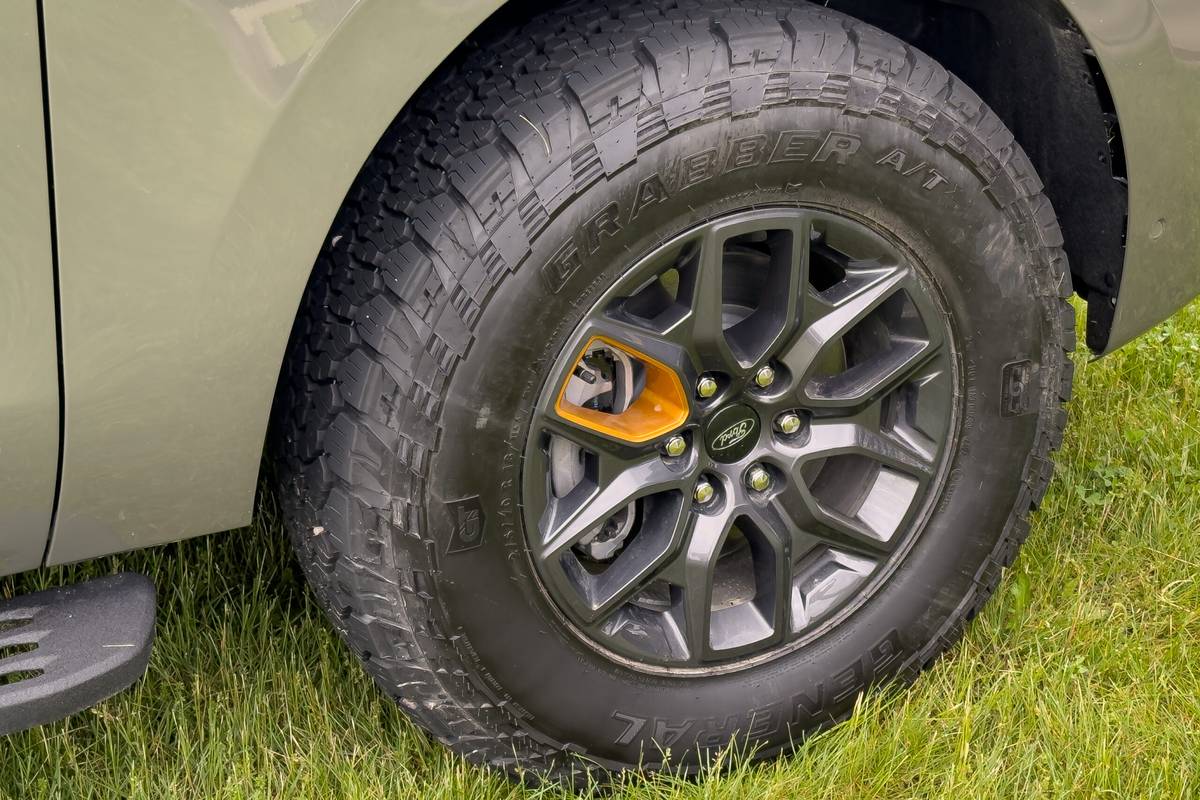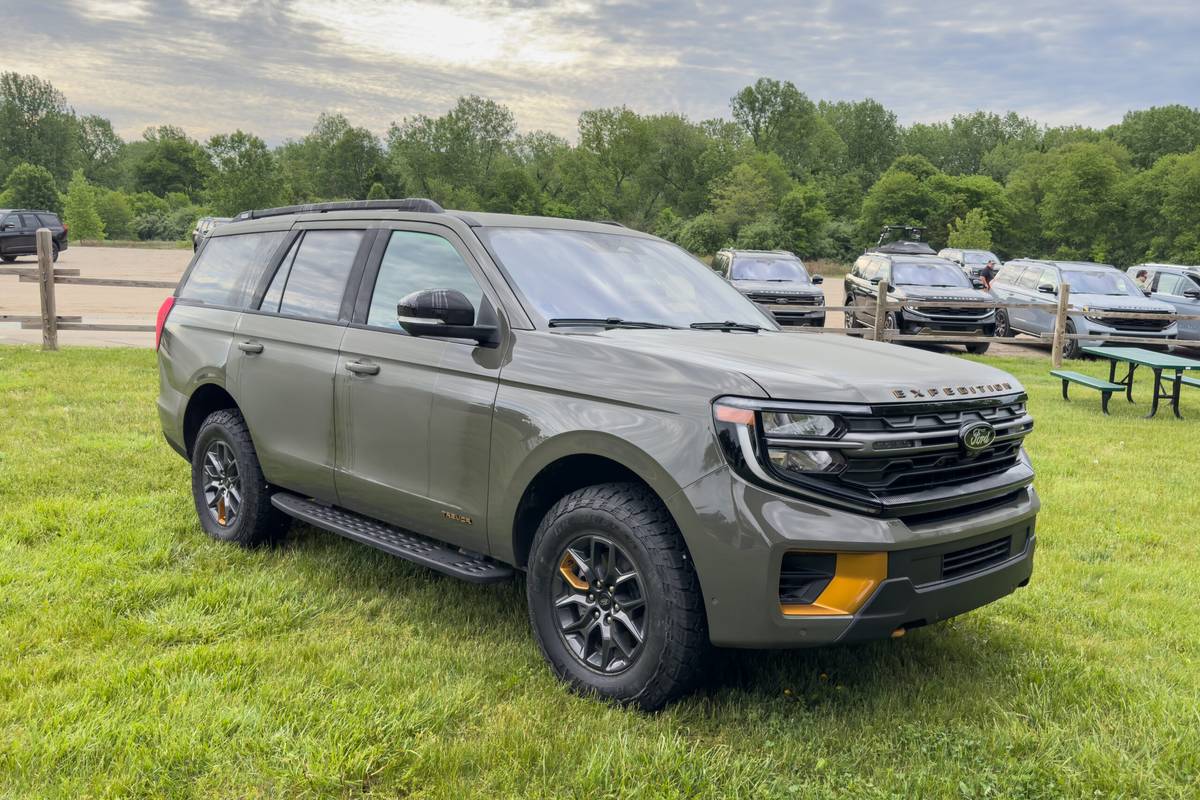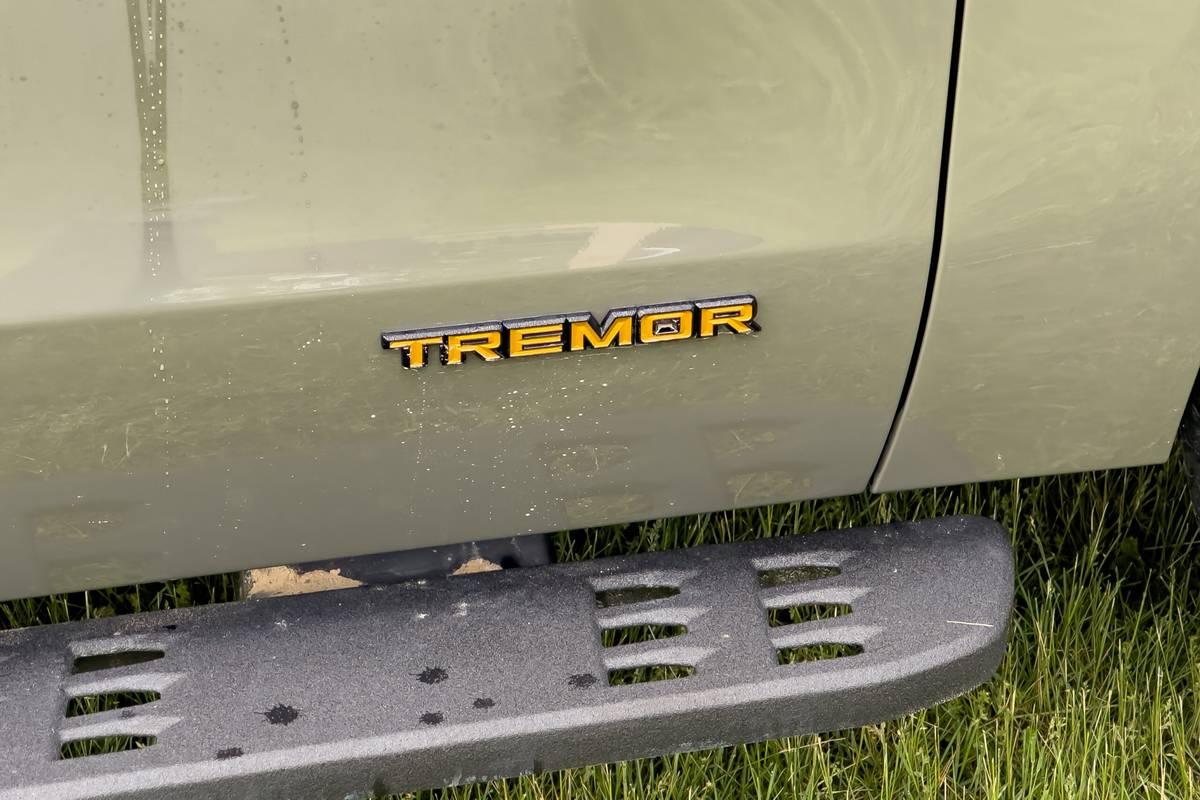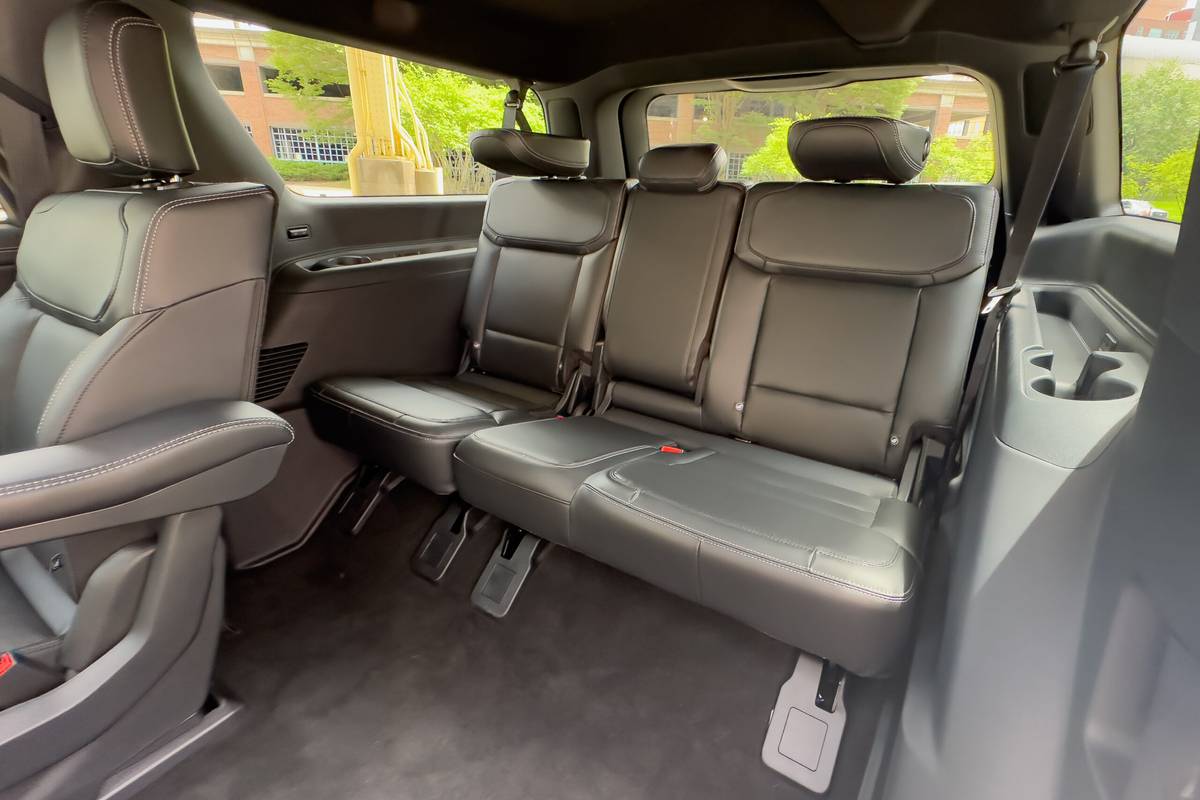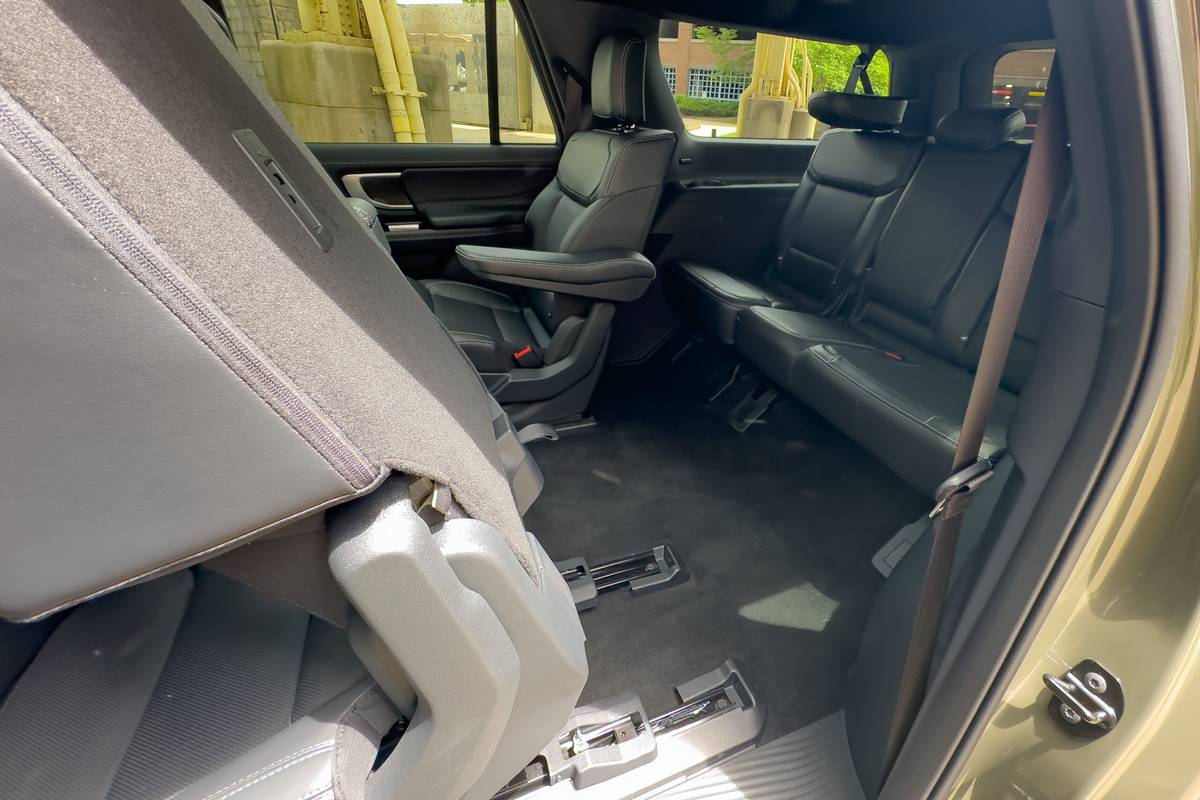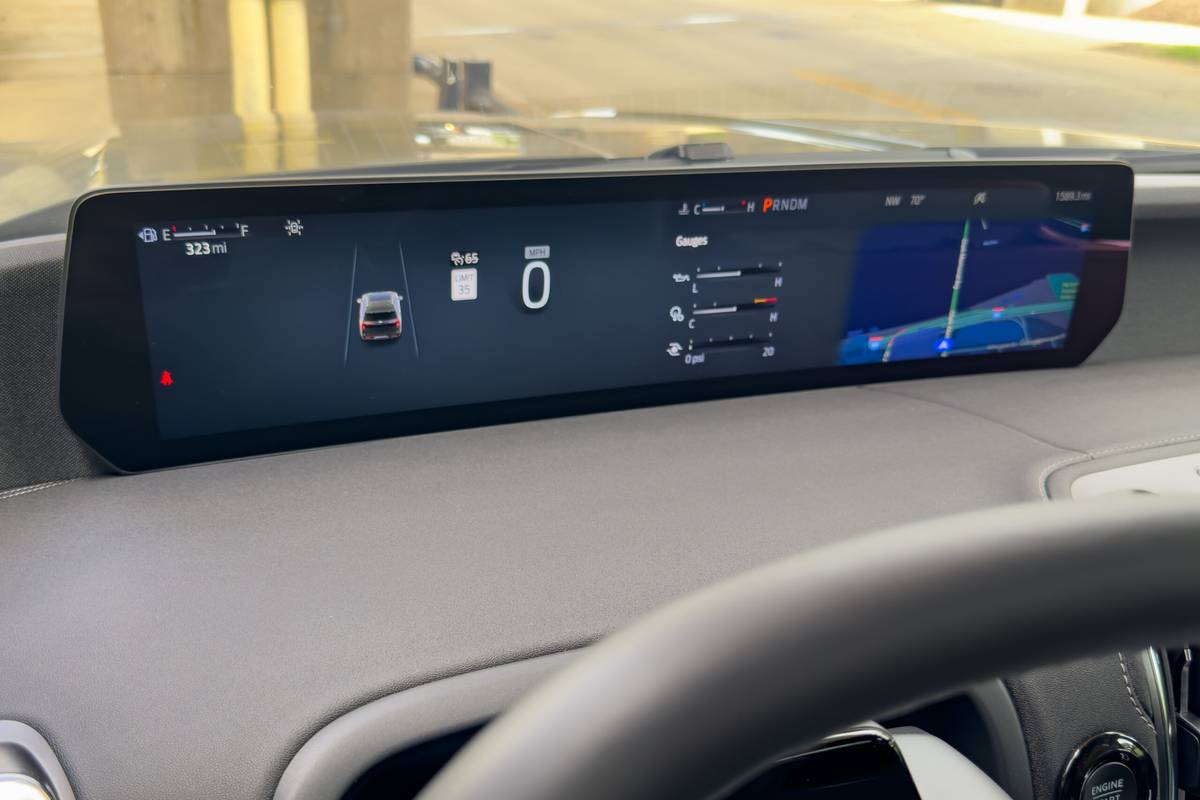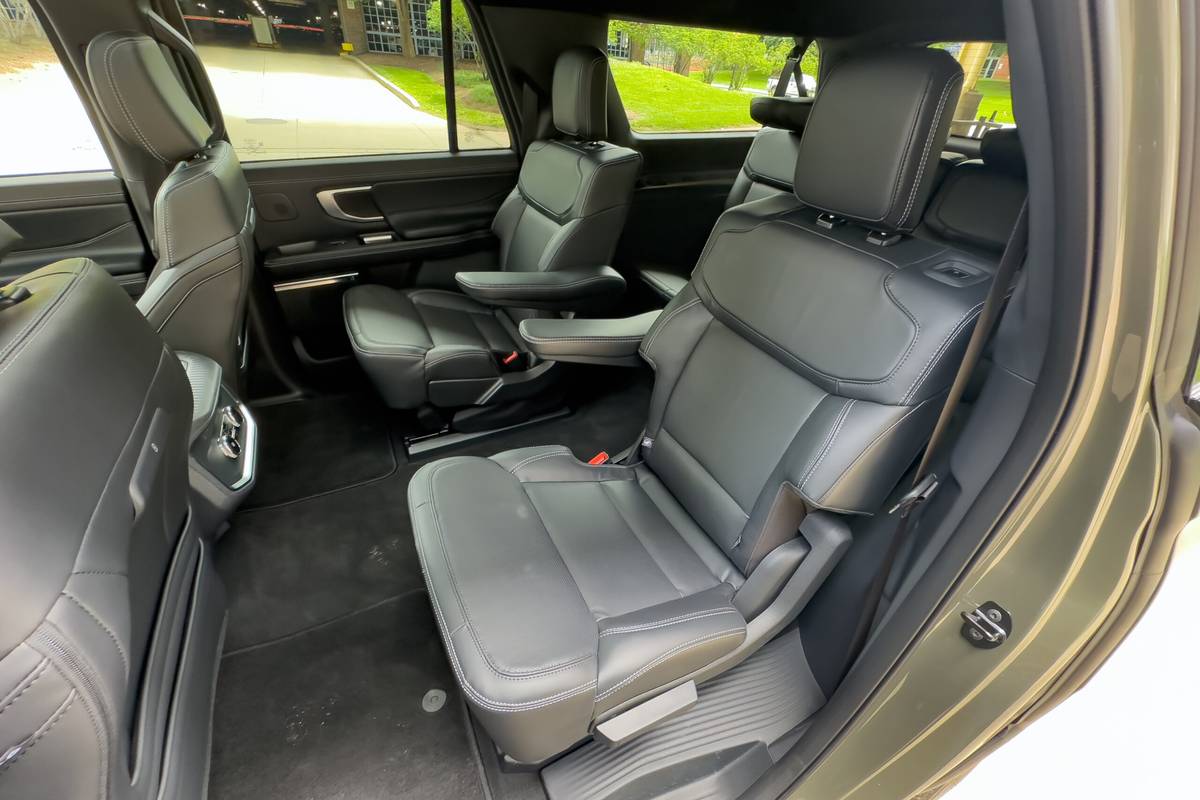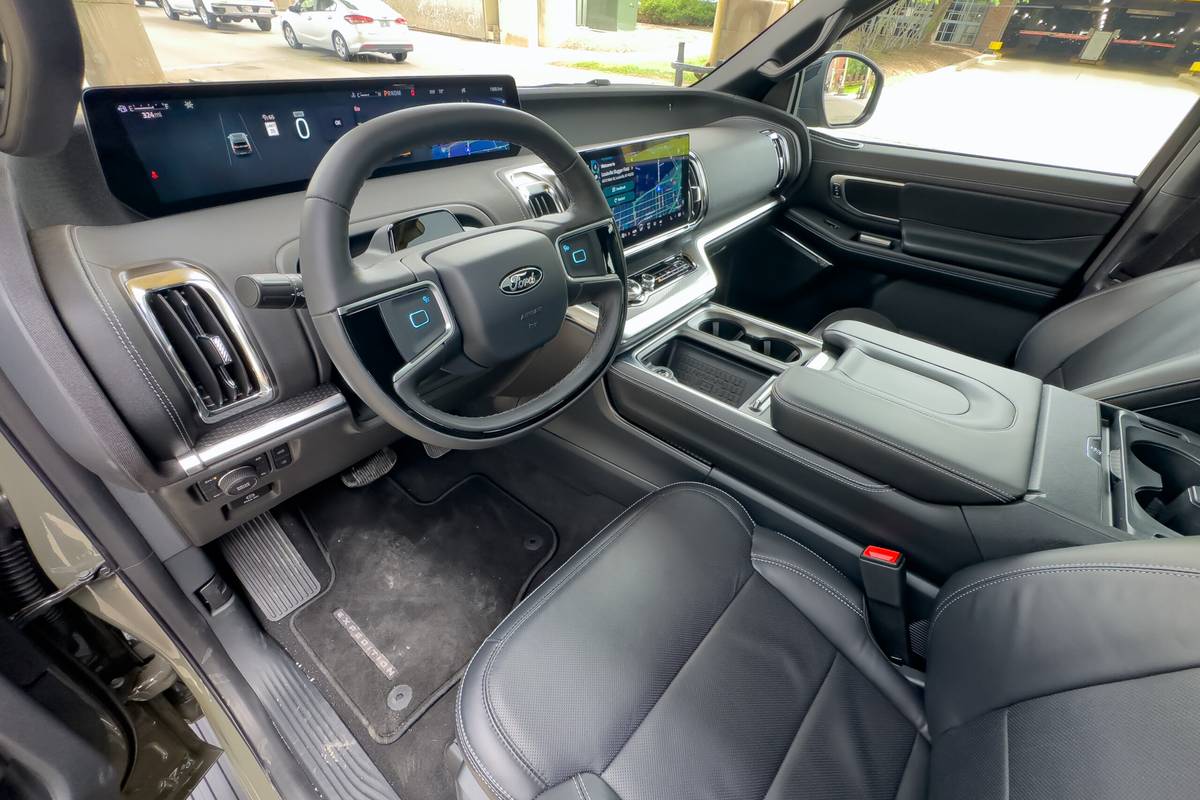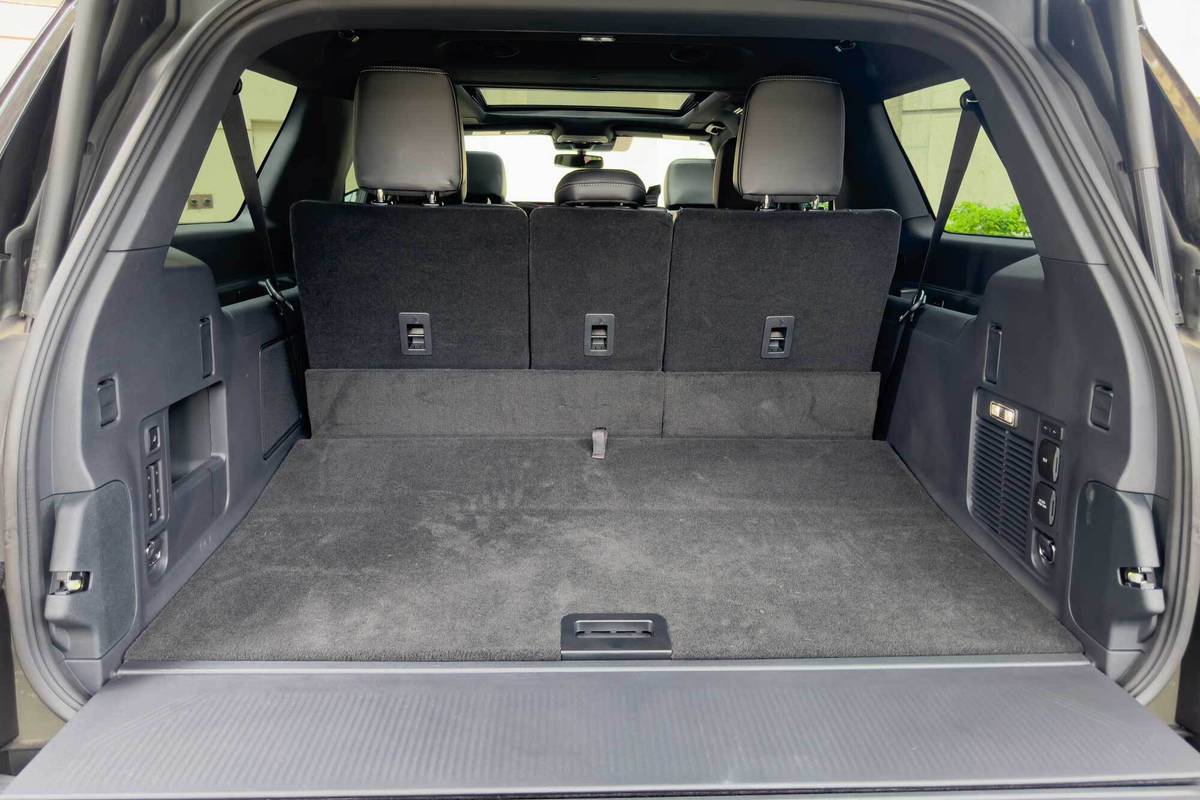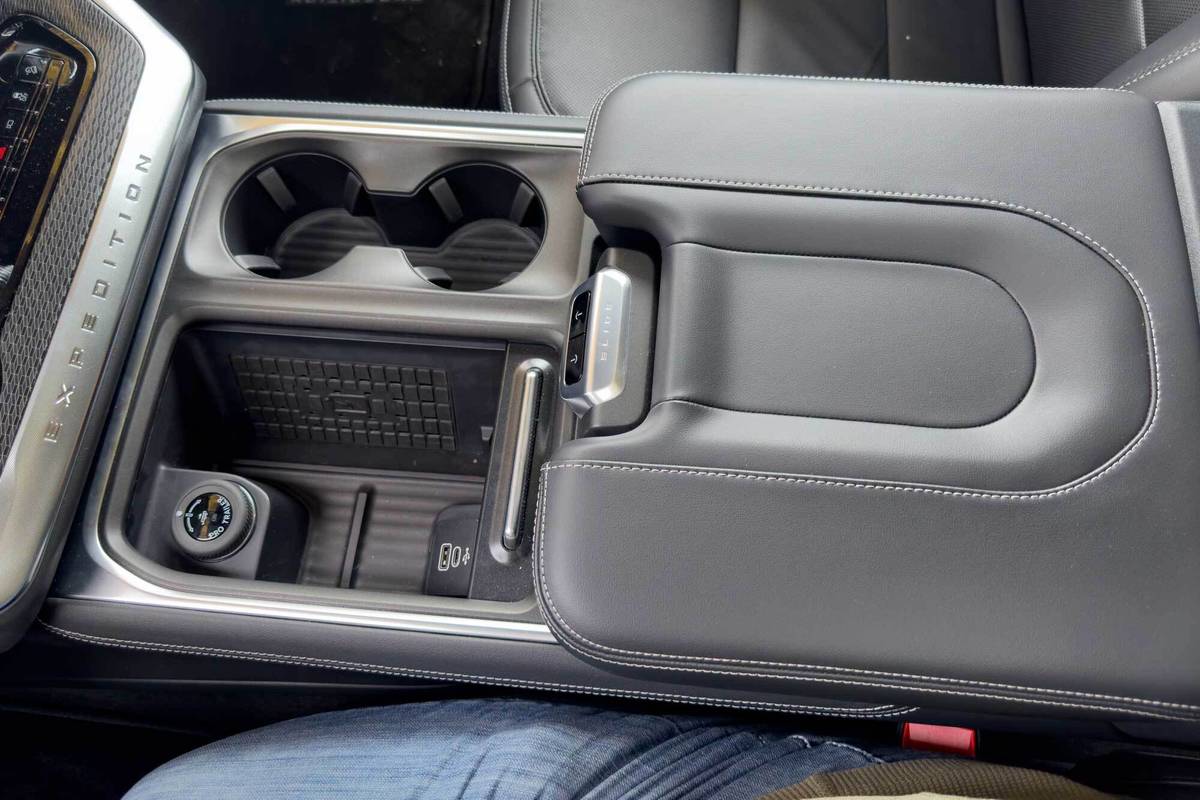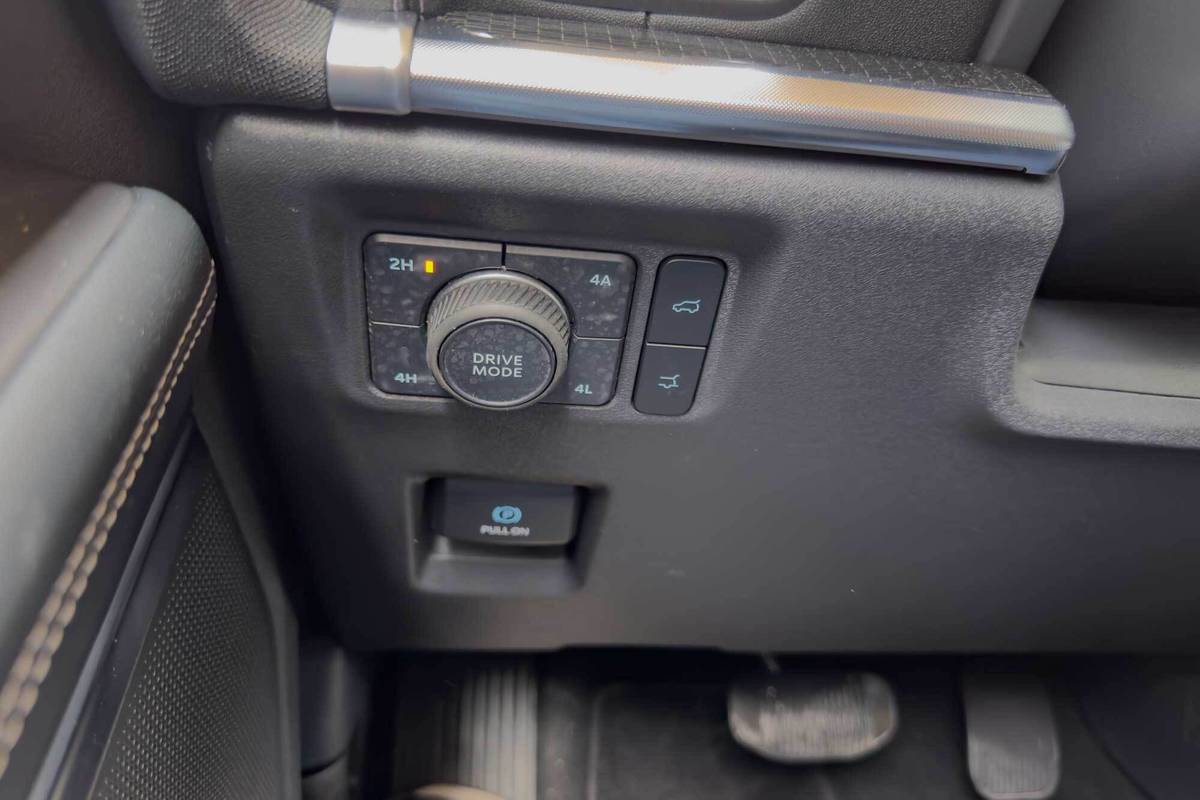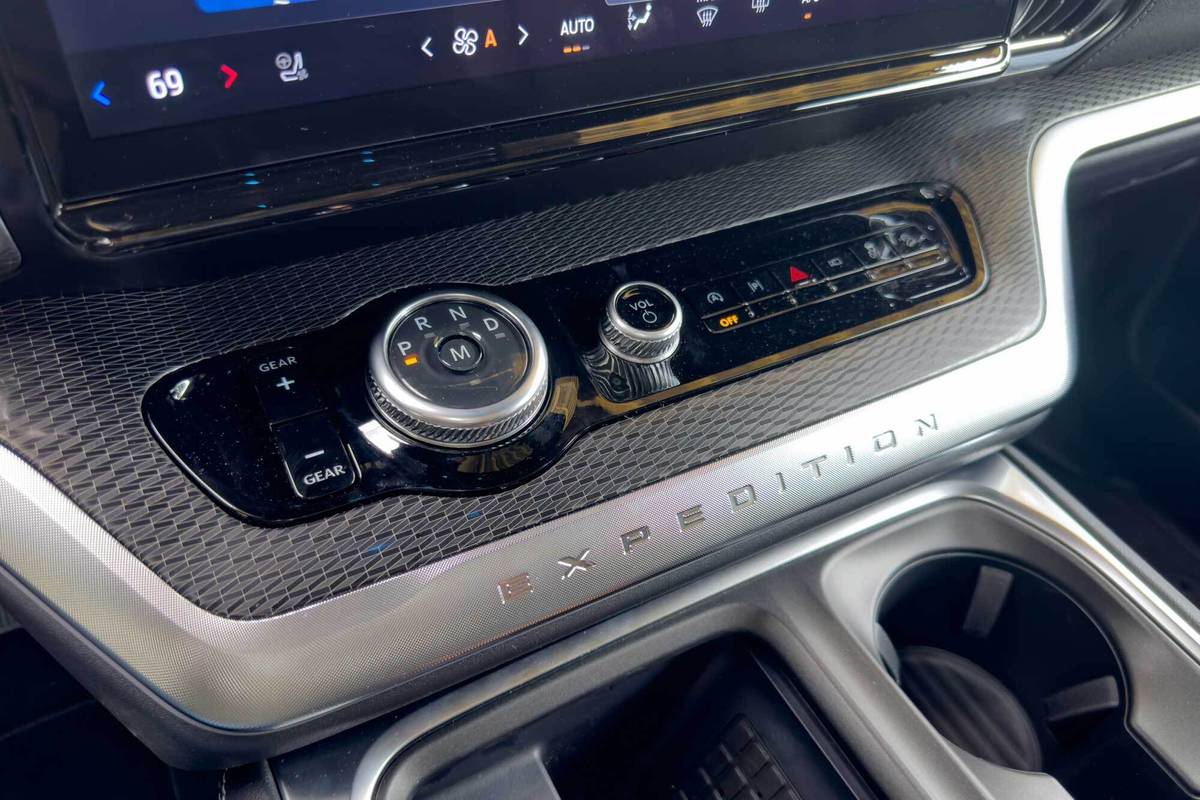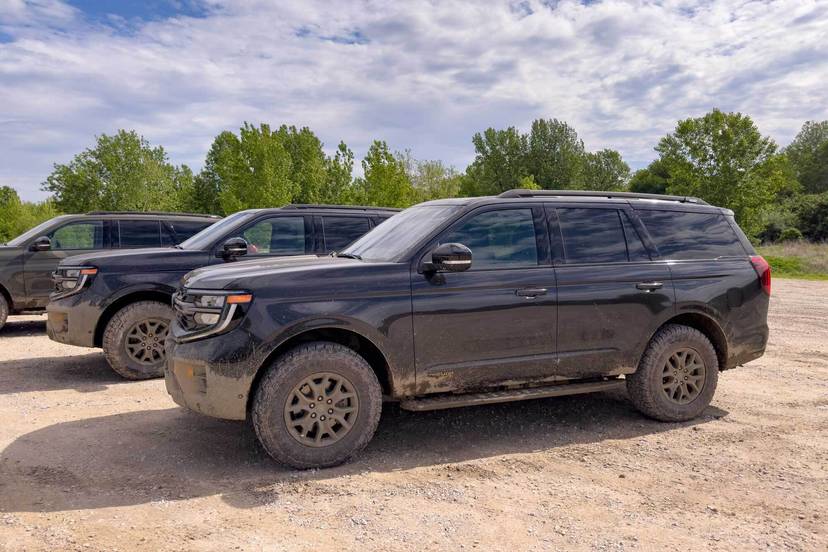
Is the Ford Expedition a Good SUV?
- Ford’s updated 2025 Expedition is meant for a new generation of families, ones more technology savvy and adventurous, and it excels in its mission to bring change to a staid vehicle class.
How Does the Ford Expedition Compare With Other Full-Size SUVs?
- It’s more spacious than foreign-brand full-size SUVs and rides and drives better than domestic competitors, but its novel dash layout might turn off some buyers who don’t care for the new design aesthetic.
If we wait long enough, change comes for us all, and it seems that the Ford Expedition’s number is up in that regard. With the traditional buyers that made the Expo a smash hit 30 years ago now aging out of the market, Ford decided it was time to update its big full-size family SUV for a new generation of family use. And while the overall shape might look very similar to the outgoing model, the interior has been thoroughly rethought for the modern age — one where screens take precedence over styling, where connectivity and apps are a priority, and where getting well off the beaten path has taken on a new urgency. The 2025 Expedition’s radically new interior is sure to alienate traditional buyers, but it will certainly excite a new generation of Expedition owners. But how does it work? And does the Expedition’s new mission make sense?
Related: 2025 Ford Expedition: Split (Gate) Personality
How Much Does a 2025 Ford Expedition Cost?
For 2025, Ford has rejiggered the trims available on the Expedition, eliminating a lot of the lower-cost, lesser-contented trims in favor of a simpler lineup that comes very well equipped. Gone are the XL, XLT, Limited and Timberline trims; the lineup now consists of the base Active, upgraded Platinum, off-road Tremor and top-of-the-line King Ranch. All starting prices below include a stunning $1,995 destination fee; the Active, Platinum and King Ranch are all available in extended-length Expedition Max form for an additional $3,000.
- Active: $63,995
- Platinum: $76,425
- Tremor: $83,025
- King Ranch: $85,650
With the elimination of the lower-priced trims, the entry price for a 2025 Expedition has jumped by more than $7,000; Ford says that this doesn’t really matter much, as most buyers tended to option up the base ‘24 Expeditions anyway. This new slimmed-down trim strategy reduces build combinations and options, improving profitability by reducing complexity. The Active trim comes with standard rear-wheel drive or optional four-wheel drive; all other trims come with standard 4WD.
How Does the 2025 Ford Expedition Drive?
I sampled a couple of versions of the Expedition on my 36-hour jaunt to Louisville, Ky., where the Expedition is built in a massive Ford factory alongside the Lincoln Navigator and Ford Super Duty pickups. I drove a standard-wheelbase King Ranch for an extended on-road test, a Platinum Max for a long highway jaunt and a Tremor for some significant off-roading. The common thread among all of them is the exceptional powertrain. The standard version of the twin-turbocharged 3.5-liter EcoBoost V-6 engine makes 400 horsepower and 480 pounds-feet of torque, and it is more than adequate to get the Expedition flying with an accompanying roar when the go-pedal is pressed. In fact, that roar sounds nothing like a turbocharged V-6, but suspiciously like a naturally aspirated 5.0-liter V-8 … making us call shenanigans on Ford for piping in artificial engine sounds. But we’ll give their engineers a pass on this one because the engine delivers its power in a stunning rush that launches everyone back into their seats. The high-output version of this engine is standard in the Tremor and optional in the Platinum as part of a couple of packages, and while it boosts output to 440 hp and 510 pounds-feet of torque, it’s also highly unnecessary — the standard engine is beyond adequate.
What it is not, however, is terribly efficient. My drive averaged between 15-21 mpg, depending on whether I was on highways or backroads, but overall, it’s still a thirsty powertrain. Two-wheel-drive models are EPA-rated 16/24/19 mpg city/highway/combined, while 4×4 versions are rated 15/22/18 mpg, which is pretty much spot on for what we saw from the Expedition’s trip computer.
The automatic transmission bangs off shifts quickly and crisply, but you’ll find that it’s shifting a lot — it has 10 forward gears to play with, and it intends to play with them all. The ride quality is also exceptional on-road, especially if your Expedition is fitted with the continuously controlled dampers, Ford’s electronically controlled shock absorbers that do an excellent job of ironing out uneven pavement and isolating potholes. Steering feel is good, as well, with just the right amount of effort and feedback for a big SUV. You won’t be attacking canyon curves with eager enthusiasm in the Expedition, but you won’t be making your passengers sick due to a soft and wallowy suspension, either. The only part of the driving experience that gave me pause was the Expedition’s brakes — they’re incredibly sensitive and grabby in every version I tried, responding to slight presses with major responses. It takes a while to get used to them in order to drive smoothly.
Goin’ Muddin’? Try the Tremor
The prior off-road version of the Expedition, the Timberline, was capable in its own way, but the new Tremor aims to improve upon that. Featuring real and proper underbody protection, chunky all-terrain tires on 18-inch wheels, an electronic locking rear differential, special off-road modes, a uniquely tuned suspension, cameras galore and a few other tricks that include one-pedal off-road driving, it’s built to go farther afield than prior versions of the Expo. And after driving it on a serious off-road course in rural Indiana just days after tons of rain had made everything slick and gooey, I can endorse its abilities in the muck.
It’s still a big SUV with all of the limitations that size can bring, like poor outward visibility, the inability to squeeze into super-tight spaces and bulk that just can’t be hidden. But Ford’s judicious use of strategic cameras to allow for forward and 360-degree visibility on the big screens are decidedly helpful. The extra power from the high-output version of the V-6 doesn’t really enter into the equation; off-roading in anything that doesn’t have a Raptor or TRX badge on it is usually done at lower speeds, where low-end torque and grip are better perks than outright power. The Tremor’s 3.73:1 final drive ratio and locking rear differential are much better features than the more powerful engine when out in the rough.
But just like the on-road trims of the Expedition that have one odd quirk (the grabby brakes), the off-road trim also comes with an oddity: The new shape of the Expedition’s steering wheel (it’s a flattened oval, or a “squircle” to some) makes off-roading a little unusual. Hand-over-hand motions feel odd, and rim-shuffling motions (you never want to hook your thumbs in the steering wheel when off-roading) are just as unusual, because whenever the wheel is slightly turned and you’re keeping your hands at the 9 and 3 o’clock positions, you’re suddenly holding a much narrower steering wheel than you were a moment prior. It’s not a deal killer by any means, but it will take some getting used to. But why does the Expedition even have such an oddly shaped steering wheel? Well, it kind of needs one …
That Radical New Interior
By far, the biggest change to the Expedition is its interior design. The new dashboard, center console and screens are a total departure from anything Ford has done in its truck lineup. Replacing the traditional gauge cluster behind the steering wheel is a 24-inch panoramic digital display located high up at the base of the windshield. A second 13.2-inch touchscreen located in the middle of the dash is your primary input means. With the steering wheel no longer a circle, you’re supposed to look over it instead of through it to see the panoramic display, much like the most recent Toyota Prius hybrid and bZ4X electric car. And just like in those Toyotas, some people will be fine with it, and some will not. Shorter drivers might find this new setup difficult to use, with the new panoramic screen cutting off some forward visibility. I personally had no problem with it and like having the screen high up in my field of view. It also eliminates the need for a head-up display, saving Ford some costs in the process.
In fact, a lot of the interior is subtly changed to help Ford cut costs. The company insists it’s just a design change aesthetic for a simpler, cleaner look, but consider what’s not here anymore: There are no buttons or switches for the headlights or steering-wheel adjustments. There are also no available massaging seats for front occupants. You adjust the steering-wheel position via touch-sensitive panels on the steering wheel, which activate corresponding icons in the digital display. The headlight controls are in the center multimedia screen. These are things that highlight how different the new Expedition is from the outgoing model, and even Ford recognizes that there’s going to be a learning curve for new customers to understand how to use it — there’s a Quick Tips app that gives you video tutorials, and dealers will be trained to show new buyers how to perform previously simple tasks. To Ford’s credit, however, none of these changes are really terribly complicated, and once you have a little practice with them, it shouldn’t be an issue.
The new Ford Digital Experience is now in the Expedition, and it works as well here as it does in other vehicles I’ve sampled it in, such as the 2025 Ford Explorer. Like almost every other automaker it seems, Google has wormed its way into Ford’s infotainment system, and in the Expedition, it controls the voice command functions, mapping duties, peripheral app downloads and more. For full utilization, you must have a Ford Connectivity Package subscription — available either for a monthly fee or as a one-time, life-of-the-vehicle purchase (a one-year trial is included with the purchase of a new Expedition). The system uses Google Maps for native navigation, but you’re welcome to use your phone’s navigation functions through Apple CarPlay or Android Auto. But to use the Wi-Fi hot spot or download apps directly to the SUV, that connectivity package is required.
Digital changes aside, the Expedition is just as spacious and useful as ever — now perhaps more so with its nifty new Ford Split Gate rear end. Notice how all 2025 Expeditions have a black liftgate regardless of what color or trim the truck is? That’s because it’s split into two sections, like a BMW or Land Rover SUV. The upper part raises and lowers normally, but the lower section stays put unless you drop it. This is handy for opening the rear hatch on a slope so your 2-liter sodas or loose basketballs don’t roll out and onto the ground. The lower portion can also be used as a seating surface for tailgating, which further plays into the Expedition’s role as an all-around family funship.
More From Cars.com:
- 2025 Ford Expedition Up Close: Changing With the Times
- 2025 Ford Expedition: Which Trim Level Should You Buy?
- These 10 SUVs Have the Highest Towing Capacity
- Which Cars Fit 3 Car Seats?
- Shop for a 2025 Ford Expedition Near You
Utility Don’t Come Cheap
While the Expedition might be an outstanding all-around family truckster able to haul people, cargo and up to 9,600 pounds of trailer, it’s not going to be accessible to most families due to its cost. As previously stated, the Expedition gets a significant price bump for 2025, but the entry-level Active trim does come with significant standard equipment, especially in the safety department. The 360-degree camera system, front and rear parking sensors, lane-centering steering and more all are part of the truck’s standard equipment, and Ford says that BlueCruise hands-free cruise control will be present on nearly 90% of all Expeditions, should you decide you want to pay for its activation (it’s another subscription-based service).
The Expedition still works as well as it ever has, with a formidable combination of utility, luxury, comfort and power. Its new interior will likely appeal to a younger generation of (affluent) families who value technology more highly, and for these buyers, the new Expo might be just what they’re looking for.
Related Video:
We cannot generate a video preview.
Cars.com’s Editorial department is your source for automotive news and reviews. In line with Cars.com’s long-standing ethics policy, editors and reviewers don’t accept gifts or free trips from automakers. The Editorial department is independent of Cars.com’s advertising, sales and sponsored content departments.












